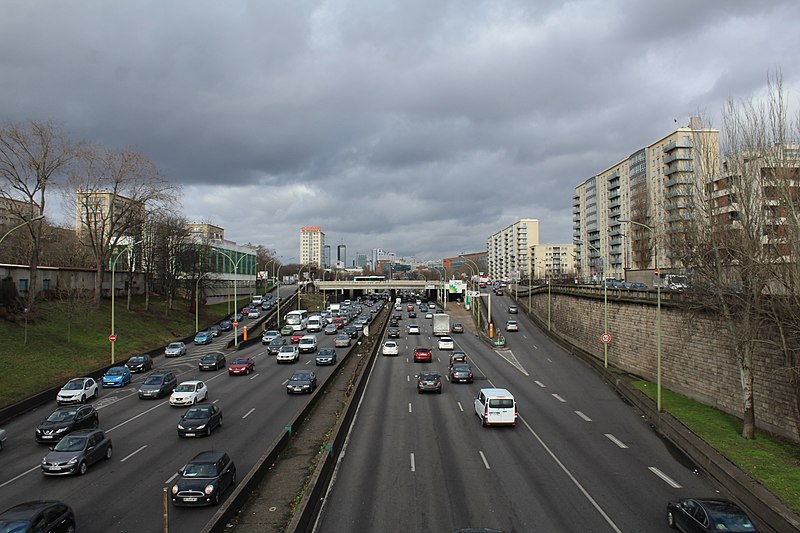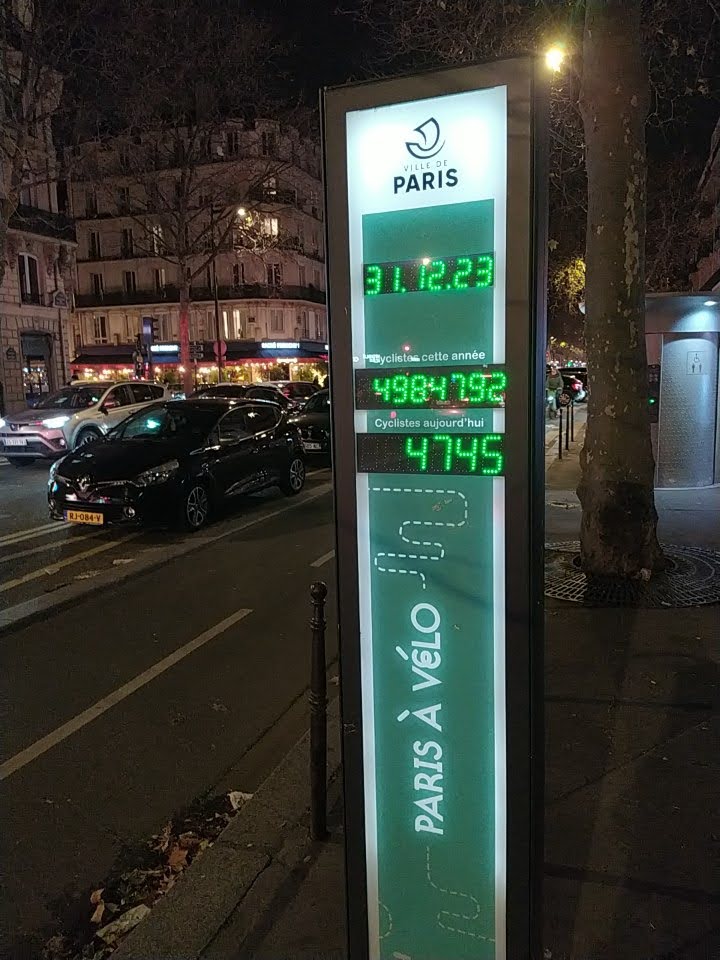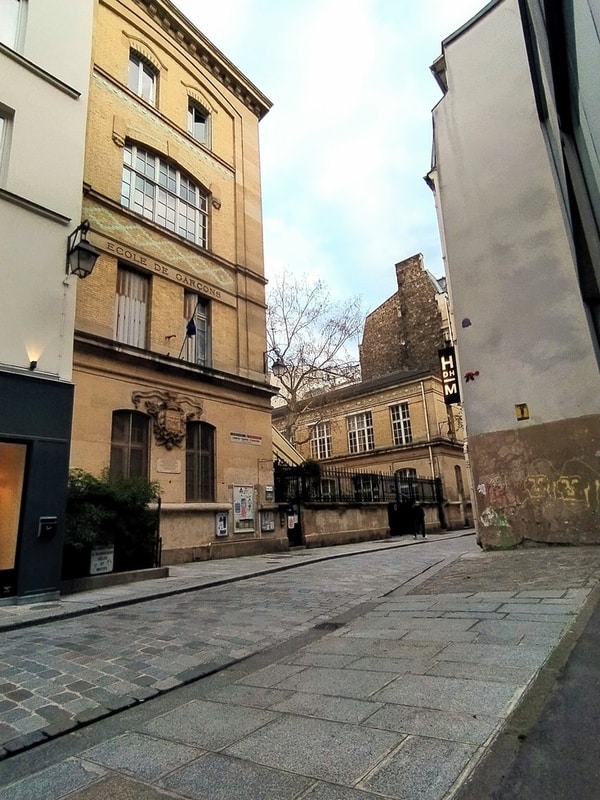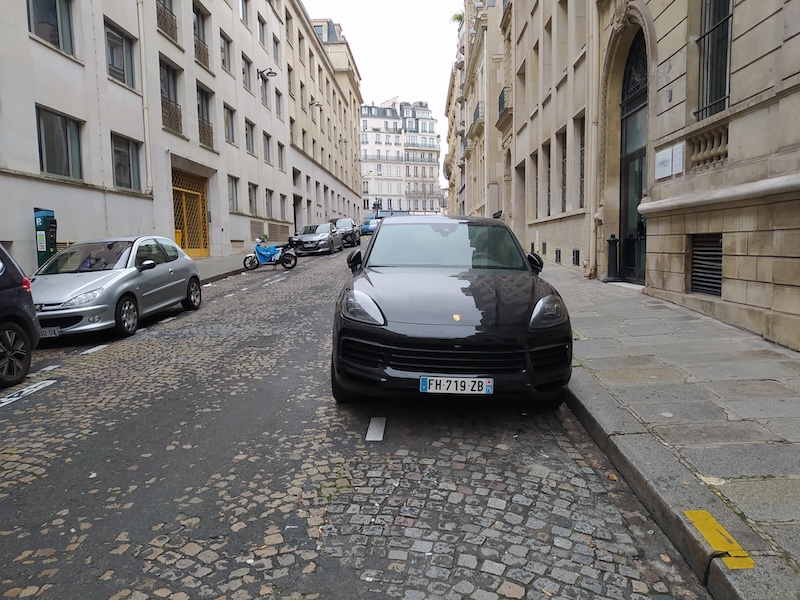Last month, we spent some time looking at what’s new in transport in Île-de-France. Today, we shift the focus from public to personal transport, to see how walking, cycling and driving have changed in the last year, and how they will continue to evolve in 2024.
For many years now, Paris has been working to rebalance the street space we give to cars versus other needs, like walking and cycling. Four years ago, the pandemic gave cities around the world the chance to accelerate this transition. Paris’s “coronapiste” cycle lanes, originally delineated with temporary bollards and blocks of concrete, became permanent. This year, a new opportunity presents itself in the form of the Olympic and Paralympic Games. Once again, mayor Anne Hidalgo and her team plan to make permanent some of the temporary changes required for the Games. But that’s not all that’s changing. Let’s take a look.

Taming the périph
The boulevard périphérique is a ring road around the city limits of Paris. Hundreds of thousands of people, many in social housing, live within a few hundred metres of the road, enduring its noise and breathing the exhaust fumes and tyre dust it throws up. There are also dozens of schools and even sports facilities adjacent to the road. Despite a small drop in traffic from its peak in the 1990s, the four-lane highway remains one of Europe’s busiest roads.
During the summer, one lane of the so-called boulevard will be dedicated to Olympic traffic. After the athletes have left, it will remain as a lane dedicated to carpooling and public transport. The transformation also includes the planting of tens of thousands of trees.
Alongside this change, a number of the périphérique’s junctions are being transformed to make them less hostile to people not inside a vehicle. The Porte de la Chapelle – home to the only permanent new arena built for the 2024 Olympics – is one example. But four other portes – including the Porte Maillot, site of both a new RER station and a tramway extension – are being similarly remodelled.
City hall also wants to reduce the speed limit, currently 70 km/h, to 50. This is another step towards the ultimate goal of making the road a classic urban boulevard, which would allow pedestrians across. But the national government wants to block the measure. Genuine concern for suburban drivers, or cynical culture war posturing?
Cycling infrastructure
Every Olympic site will be reachable by a dedicated bike lane, thanks to 60 km of new infrastructure. And Paris and the department of Seine-Saint-Denis, where most of the events are taking place, have promised to make these permanent. 10 000 bicycle parking spaces will also be provided, spread around the various sites; the stands will then be transferred elsewhere in the region. Those without their own bike will be able to use the local cycle hire scheme, Vélib’, thanks to its 3000 extra mechanical and electric-assist bikes.
These aren’t the only new cycle lanes being added to the Parisian streetscape. Among the many recently completed lanes is one on the rue La Fayette, leading all the way from Stalingrad in the densely populated north east to the department stores and offices of the boulevard Haussmann.

Pedestrianisations, large and small
Paris continues to increase the number of school streets. As of November, Paris boasted 201 of these: streets next to schools where access to cars is restricted. In many cases, this is controlled with a barrier which can only be opened by the emergency services. Where this isn’t possible – for example, because delivery vehicles need access to local shops – signs ban entry to all other users and speeds are restricted to a walking pace. These prevent the dangerous approach of often large cars for dropoff and pickup, and reduce pollution in the playground. Outside of school hours, kids and dog owners alike use them to play, while neighbours can get a better night’s sleep.
Of Paris’s 201 school streets, most of which have been introduced in the last few years, 56 have been completely redesigned, introducing more greenery and sometimes even play equipment. Check out the gallery on the city’s website to see what I mean.
By 2026, the number of school streets is set to sit at 300, with 100 of these being redesigned.

Beyond these small-scale pedestrianisations, city hall has its sights on some landmark transformations. The Place de la Concorde, Paris’s largest square and one with a rich history, is currently a nightmare roundabout. The municipal council voted this month to turn it into a place for people. In the same session, they voted to pedestrianise part of the Place du Trocadéro (which overlooks the Eiffel Tower from the right bank) and the Pont d’Iéna (which connects the two). Mayor Hidalgo discussed this plan years ago, but the prefect of police wasn’t a fan. This time, the current prefect has said he needs to wait for new studies before making a decision. The municipal opposition, meanwhile, doesn’t like the idea.
Referendums, for good and ill
Last April, Parisians voted in an unprecedented local referendum to ban free-floating e-scooters from the city. The result was overwhelming, and the mayor hailed it as a great democratic success. But turnout was only 11%. And the result was to remove a relatively green, clean and safe alternative to driving.
This month, we repeated the exercise, this time on a subject closer to my heart: tripling the price of parking for SUVs. I wrote about this at greater length in November, and again for Streetsblog USA just before the vote. In short, I fully support the policy, but I questioned the strategy of holding a referendum. The result was less extreme this time: 54.55% voted in favour of the policy. Turnout was even worse: 5.68%. I breathed a sigh of relief, but opponents were quick to cry foul, complaining voters were confused because there were fewer polling stations than in an election.

The same day, local votes were organised in some arrondissements:
- Residents of the centre said yes to redesigning the Place du Louvre in favour of pedestrians, vegetation and public transport.
- In the 10th arrondissement, residents voted for new cycle lanes on the boulevard de Magenta. This is a major thoroughfare where the current cycle lanes, on the sidewalks, are not fit for purpose.
- Citizens of the 12th voted in favour of expanding the concept of school streets to other municipal buildings frequented by children, such as libraries and sports facilities.
- In the 20th, locals supported the creation of a “caisse alimentaire solidaire” – a sort of social security for food. This is the only one of the day’s votes not focused on street design, one of the main competencies of the local government.
- In the 8th arrondissement, voters rejected a proposal to pedestrianise some key streets in the north of the district. This arrondissement, along with others in the west of the city, also voted against the new SUV measure. This repeats the pattern we see every election, with the west typically voting for the right, while the east and centre lean left.
Limited traffic zone
The city has been talking about a new limited traffic zone in the centre of Paris for a few years now. Originally touted for 2022, city hall now insists it will be implemented this year, after the Paralympic Games. The first plan included the first four arrondissements (governed as Paris Centre), along with parts of the 5th and 6th. This has now been scaled back to just Paris Centre, but the city still hopes to include the road along the river on the left bank, subject to approval from the prefecture of police.
The zone is intended to allow anyone to drive in, but not across. Buses, emergency vehicles, taxis and registered private hire cars will be exempt.
The city’s web page on the subject doesn’t explain how the measure will be enforced. There’s no mention of automated enforcement, which would be tricky since anyone is allowed in as long as they can justify that they’re not merely passing through. But will there be police at every entry point every day? Presumably they will rely on random checks, making the system somewhat leaky. A better approach might be the one taken in the Marais, where a new traffic plan was introduced last year. By simply inverting some one-way streets, access was maintained, but it became much more difficult to drive across. Dedicated bus lanes – which are easier to enforce with cameras – can ensure that public transit, taxis and emergency vehicles are still able to pass from one side to the other.
National changes for drivers
To finish, there are a few changes affecting drivers across the country, thanks to recent changes in the law. These are a mixed bag:
- Starting in April, motorcycles will finally be included in the requirement for vehicle safety checks. Cars have been subject to tests every two years since 1992; for two-wheeled vehicles, the policy has been pushed back a number of times. For president Emmanuel Macron, 2022 “wasn’t the moment to annoy the French people”. Never mind the annoyance of non-compliant motorbikes storming through the city at all hours.
- Since 1 January 2024, small speeding tickets no longer cost the offender points on their licence. A clean French driving licence has 12 points; if this drops to 0, the licence is withdrawn. Prior to this year, if you were caught speeding by less than 5 km/h, you could lose one point. Factor in the tolerance allowed to account for margin of error, and this could mean doing 60 in an urban 50 km/h zone. Evidently the government believes that if you manage to get 12 speeding tickets, you don’t deserve to lose your licence. For interior minister Gérald Darmanin, this is being “understanding with those who work”. So it’s impossible to get to work without speeding?
- Also new for 2024: taxes for registering large and polluting cars have gone up. Penalties exist based on both weight and carbon dioxide emissions, and January 2024 saw several changes to these penalties. Most notable is that the tax was previously capped to 50% of a vehicle’s price. With this cap removed, some of the worst-offending cars will now cost more to register than to buy in the first place.
This brings our annual new year retrospective to a close. As we’ve seen, big changes are happening in 2024, with new long-distance train services, metro and tramway extensions, new ticketing options, expanded cycle lanes, and more and more pedestrianisations. 2024 will be a historic year for Paris.
 Fabric of Paris
Fabric of Paris